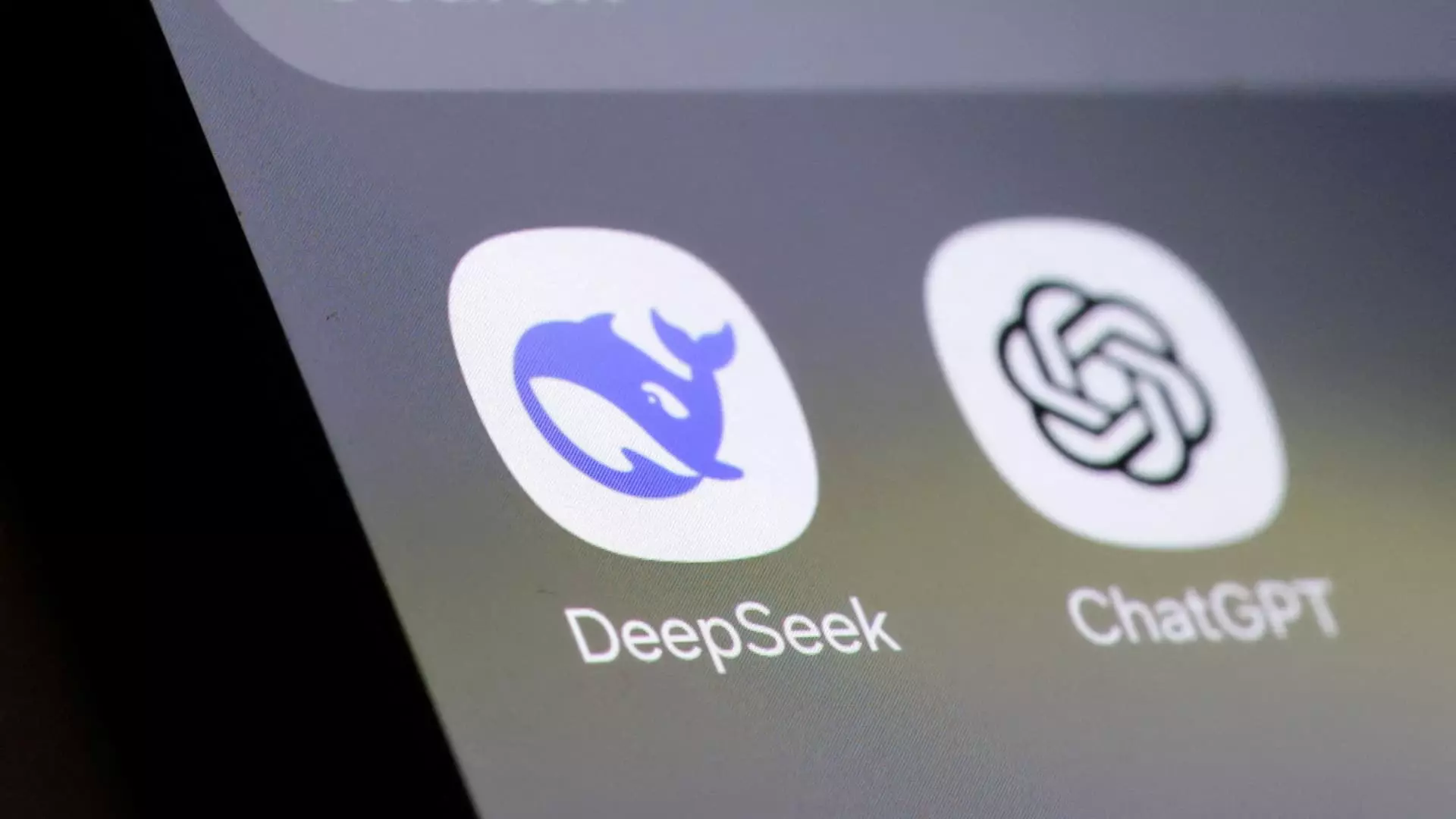In recent weeks, the Chinese technology sector has witnessed a remarkable phenomenon—a monumental shift driven by the rapid adoption of DeepSeek’s latest artificial intelligence model. Companies across various industries are eagerly exploring how this breakthrough technology can enhance productivity and reshape the economic landscape, despite international restrictions that have complicated access to advanced semiconductor technology. As competition in the AI ecosystem intensifies, DeepSeek has emerged as a key player, offering affordable and user-friendly AI applications that challenge established giants like OpenAI.
DeepSeek is a relatively new entrant, established in 2023 out of the framework of a quantitative hedge fund. Since then, it has garnered substantial attention and traction within the business community. The release of its R1 model on January 20 has been pivotal, showcasing impressive reasoning capabilities while also significantly undercutting the pricing of OpenAI’s offerings. This cost-effectiveness, combined with open-source accessibility, has poised it to attract various sectors eager to capitalize on AI’s transformative potential.
A plethora of Chinese businesses are integrating DeepSeek’s tools, from automotive giants like BYD to financial firms and telecom operators. The rapid adoption across such a diverse range of industries underscores DeepSeek’s impact and the broad scope of its applications. As Wei Sun, an analyst at Counterpoint Research, astutely notes, this unprecedented pace of integration suggests a meaningful socio-economic shift in the market.
The optimism surrounding AI technology has extended the realm of Chinese stocks, with many AI-related corporations witnessing significant gains. According to UBS, AI stocks in China have seen a 15% increase since the year’s onset, significantly outperforming the broader MSCI China Index. This burgeoning interest can be attributed to timing—the release of DeepSeek’s R1 model coincided with key holiday travel periods in China, enabling rural sectors to engage in conversations about AI technologies that were previously confined to metropolitan areas.
Wenhao Zhang, CEO of Doodod, emphasizes this shift in understanding, noting an educational wave sweeping through less developed regions about AI and its economic implications. Such awareness not only paves the way for future adoption but also enhances the potential for a more diversified economic environment.
DeepSeek’s appeal lies not just in its functionalities but also in its accessibility. By providing open-source solutions, the company eliminates the barriers to entry traditionally associated with AI technologies, effectively allowing businesses to tailor applications to their specific needs. This customization has been a game-changer for companies like Movitech, which reported a notable sales increase after adopting DeepSeek’s tools.
The technology’s affordability disrupts the conventional notion that cutting-edge AI belongs only to large corporations thanks to exorbitant costs. As James Tong states, the integration of DeepSeek has already led to a 25% boost in Movitech’s sales. This democratization of technology has the potential to level the playing field, empowering small to medium-sized enterprises to compete in an increasingly complex market.
Social media‘s role in facilitating the adoption of DeepSeek cannot be understated. The proliferation of instructional content on platforms such as TikTok has not only demonstrated the practical applications of DeepSeek but has also breathed life into the concept of AI accessibility among everyday consumers. The notable surge in Mac mini sales during this period highlights the tangible connection between social media influence and technology adoption.
Despite the promising trajectory of DeepSeek and similar technologies, uncertainty looms regarding widespread integration within the workforce. Experts like Mike Fang point out that small businesses might still hesitate to adopt AI technologies due to concerns about the overall costs of full implementation, which include customization and necessary computing power.
Looking into the future, however, optimism remains strong. Predictions suggest that within a few years, the cost to access generative AI models could drop below 1% of current prices, potentially revolutionizing the way businesses operate. Furthermore, the expectation that by 2029, 60% of Chinese firms will have incorporated AI into their core offerings indicates a future where AI does not simply enhance productivity but revitalizes entire business models.
DeepSeek’s ascendance epitomizes a transformative moment for China’s AI landscape, characterized by an unprecedented speed of integration and a renewed focus on affordability and accessibility. As companies adapt to this new reality, the broader implications of AI adoption promise to reshape not just the economy, but also societal perceptions of technology’s role in everyday life. While challenges remain, the potential for AI to become an integral part of business in China seems not only feasible but inevitable.

